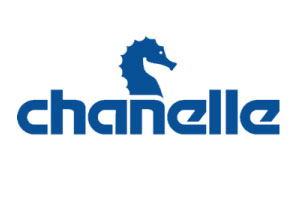Product Ref: CLRUM01 Category: Worming

Royal Mail Tracked 24 (Signed For)

Royal Mail Special Delivery Guaranteed by 1pm

| Category | POM-VPS |
| Temperature | Ambient |
| MA/VM/EU No: | 08749/4077 |
| Species |
|
| VMD Link | https://www.vmd.defra.gov.uk/ProductInformationDatabase/product/A009580 |
| NOAH Link | https://www.noahcompendium.co.uk/?id=-463759 |
| Dosage | Oral Use. Shake the product well before use. To ensure administration of a correct dose, body weight should be determined as accurately as possible; accuracy of the dosing device should be checked. If animals are to be treated collectively rather than individually, they should be grouped according to their bodyweight and dosed accordingly, in order to avoid under- or overdosing. Dose according to bodyweight at the rate of 10 mg oxyclozanide per kg bodyweight (cattle) Cattle : 3 ml per 10 kg bodyweight; For example:- Bodyweight Dose 50 kg 15 ml 100 kg 30 ml 150 kg 45 ml 200 kg 60 ml 250 kg 75 ml 300 kg 90 ml 350 kg and over 105 ml |
| Withdrawals | Do not use in cases of hypersensitivity to the active substance or to any of the excipients Special warnings Care should be taken to avoid the following practices because they increase the risk of development of resistance and could ultimately result in ineffective therapy: - Too frequent and repeated use of anthelmintics from the same class, over an extended period of time - Underdosing, which may be due to underestimation of body weight, misadministration of the product, or lack of calibration of the dosing device (if any). - Suspected clinical cases of resistance to anthelmintics should be further investigated using appropriate tests (e.g. Faecal Egg Count Reduction Test). Where the results of the test(s) strongly suggest resistance to a particular anthelmintic, an anthelmintic belonging to another pharmacological class and having a different mode of action should be used. At normal dose levels, oxyclozanide is not active against immature flukes present in liver tissue. Do not use in cases of hypersensitivity to the active substance or to any of the excipients. To date no resistance to oxyclozanide has been reported. Use of the product should be based on local (regional, farm) epidemiological information about susceptibility of nematodes and recommendations on how to limit further selection for resistance to anthelmintics. Special precautions for use in animals When a dosing gun is used to administer the product, care must be taken to avoid damage to the pharyngeal region. Adverse effects are occasionally enhanced in animals suffering from severe liver damage and/or dehydration at the time of dosing. Due regard must always be given to the physical condition of animals undergoing treatment, particularly those in advanced pregnancy and/or under stress from adverse weather conditions, poor nutrition, penning, handling etc. These effects are occasionally enhanced in animals suffering from severe liver damage and/or dehydration at the time of dosing. Special precautions to be taken by the person administering the veterinary medicinal product to animals Do not eat, drink or smoke where handling the product. This veterinary medicinal product can cause irritation to skin, eyes and mucous membranes. In case of contact with the product, rinse the affected area immediately with plenty of water. Contaminated clothing should be removed immediately. Wash hands after use. Wear impermeable gloves during use. People with known hypersensitivity to oxyclozanide or any of the excipients should avoid contact with the veterinary medicinal product. Other precautions Oxyclozanide is toxic to dung fauna and aquatic organisms. The risk to aquatic ecosystems and dung fauna can be reduced by avoiding too frequent and repeated use of oxyclozanide in cattle. The risk to aquatic ecosystems will be further reduced by keeping treated cattle away from water bodies for 5 days after treatment. Adverse reactions (frequency and seriousness) At normal oxyclozanide dose levels, cattle may show slight softening of the faeces with the occasional animal showing increased frequency of defaecation and transient inappetence. Milking cattle, particularly high yielders, may show a reduction in yield, occasionally of 5 % or more, for about 48 hours after handling. The effect of this small loss may be minimised by spreading herd dosing over a period of about one week. Environmental properties Faeces containing oxyclozanide excreted onto pasture by treated animals may reduce the abundance of dung feeding organisms which may impact on dung degradation. Oxyclozanide is toxic to aquatic organisms. Oxyclozanide is persistent in soils. Special precautions for the disposal of unused products or waste materials Any unused veterinary medicinal product or waste materials derived from such veterinary medicinal product should be disposed of in accordance with local requirements. Do not contaminate ponds, waterways or ditches. Treated animals (cattle) should not have access to surface water for 5 days after treatment to avoid adverse effects on aquatic organisms. Use during pregnancy, lactation or lay Can be used during pregnancy or lactation. See special precautions for use in animals. Overdose (symptoms, emergency procedures, antidotes), if necessary The effects of oxyclozanide overdosage are possible diarrhoea, inappetence and loss of weight in cattle. These effects are occasionally enhanced in animals with severe liver damage and/or dehydration at the time of dosing. At higher doses the severity of signs of toxicity increased and mortality occurred at 50 mg/kg bw and higher. If you notice any serious effects or other effects not mentioned on this datasheet, please inform your veterinary surgeon Incompatibilities In the absence of compatibility studies, this veterinary medicinal product must not be mixed with other veterinary medicinal products. Withdrawal periods Meat and offal: 13 days. Milk: 108 hours (4.5 days). |